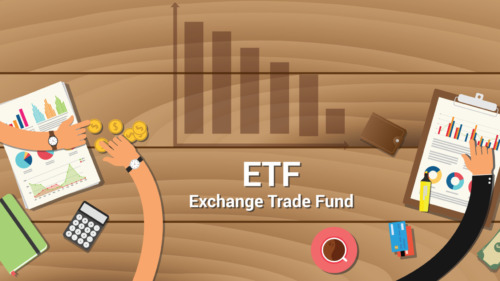Trouble in the Metaverse: 99% of Play-to-Earn Investors Now Counting Their Losses

During the crypto market boom in November 2021, the cumulative market capitalization of the “big four” metaverse projects peaked at $16 billion. On-chain analysis explores the critical factors that have plunged 98% of metaverse token holders into losses in 2023.
At the market top in November 2021, buzzwords like Metaverse, GameFi, and Play-to-Earn dominated the crypto space. Barely two years later, most investors who bought into the Metaverse hype are now counting their losses.
Market Capitalization of the “Big Four” Metaverse Tokens Has Dropped by 92%
During the 2021 crypto market rally, The Sandbox (SAND), Axie Infinity (AXS), Enjin Coin (ENJ), and Decentraland (MANA) were arguably the big four projects that dominated the Metaverse and GameFi sector.
Notably, the cumulative market capitalization of the four tokens totaled $16 billion at the November 2021 peak. At the time, these Metaverse tokens accounted for 0.5% of the $3 trillion global cryptocurrency market cap.
However, as the crypto winter began, Metaverse projects drew widespread criticism, from security to privacy, community governance, and a lack of long-term HODLing incentives.
Consequently, as of September 2023, SAND, AXS, ENJ, and MANA are now collectively worth only $1.23 billion. This is a staggering 92% decline from the $16 billion market cap recorded in November 2021.
To put this decline in proper context, the market dominance of these four Metaverse tokens’ has now dropped to 0.12% of the global crypto market cap.
Metaverse Investors Plunge into Losses | Market Cap – ENJ, MANA, AXS, SAND | Source: Santiment
The market capitalization is a financial metric that represents the total value of a cryptocurrency’s circulating supply. It provides an estimate of the overall value of a blockchain at a specific point in time.
By summing up the market cap of the big four metaverse projects, investors can have a clear picture of the sector’s systemic importance within the broader cryptocurrency market.
This underlines that crypto investors have grown increasingly disinterested in the metaverse sector over the last two years. And now, they have been allocating capital towards other more resilient sectors and newly emerging fads.
What Is Traverse? Inside The Latest Metaverse Game From GamerHash
Majority of Metaverse Investors are Reeling In Losses
It may not be game over yet, but those who bought into the 2021 metaverse hype are already counting their losses.
IntoTheBlock’s Historical In/Out of the Money (IOMAP) data estimates the deficit or profitability levels of all wallet addresses holding a particular token. It is derived by comparing current prices to the average cost of acquiring those tokens.
The historical IOMAP data presented below shows that an overwhelming majority of the current ENJ, MANA, AXS, and SAND holders are in the red.
Of the big four metaverse projects, Axie Infinity and The Sandbox holders are faring the worst.
Known for its once boisterous in-game economy, Axie Infinity is an NFT-based online video game developed by Vietnamese studio Sky Mavis. Historical data from IntotheBlock now shows that 99.54% of all addresses that acquired AXS are currently “out of the money.”
Metaverse Investors Plunge into Losses | Historical In/Out of Money data – AXS, SAND | Source: IntoTheBlock
In close second is the Sandbox project – a virtual world where players can build, own, and monetize their gaming experiences. A whopping 98.34% of those who bought into the SAND token are also now underwater.
Meanwhile, Decentraland and Enjin Coin investors are also far from being profitable.
Decentraland became popular for its vibrant virtual marketplace and community center, where users create, buy, and sell digital real estate. However, as of September 1, 2023, 89.04% of investors holding the native SAND token are also in the negative territory.
Metaverse Investors Plunge into Losses | Historical In/Out of Money data – MANA, ENJ | Source: IntoTheBlock
Last of the four, the Enjin Coin ecosystem, provides unique software to allow developers to create and manage virtual goods on the Ethereum blockchain. Holders of the native ENJ token have also suffered a similar fate. 75.5% of investors in the Enjin are also now sitting deep in a deficit position.
Read More: What Is GameFi?
Chances of a Rebound Appear to Be Getting Slimmer
Concisely put, the cumulative market cap of ENJ, MANA, AXS, and SAND has dropped 92% from $16 billion to $1.23 billion between Nov 2021 and Sept 2023. But more alarmingly, it shows that metaverse tokens’ dominance within the crypto industry also shrunk by nearly 76%.
Apple’s Vision Pro launch and optimistic statements from Meta (Facebook) CEO Mark Zuckerberg have triggered a mild resurgence in the Metaverse sector in July 2023.
But now, that momentum seems to be petering out fast for several reasons. Firstly, criticism surrounding security, long-term utility, and player retention still lingers. However, the United States Securities and Exchange Commission (SEC) has also compounded the Metaverse woes.
In June 2023, the SEC filed lawsuits against Binance and Coinbase. The regulator listed The Sandbox, Axie Infinity, and Decentraland as “securities” in the filings. In the aftermath, SAND dropped by approximately 44%, AXS by 33%, and MANA by 40%.
In conclusion, the social sentiment surrounding the metaverse is now overwhelmingly bearish. Still, this could attract strategic investors looking to buy the dip in hopes of a future resurgence.
You might like – Play to Earn: Is It Taxable?
Disclaimer
In line with the Trust Project guidelines, this price analysis article is for informational purposes only and should not be considered financial or investment advice. BeInCrypto is committed to accurate, unbiased reporting, but market conditions are subject to change without notice. Always conduct your own research and consult with a professional before making any financial decisions.







